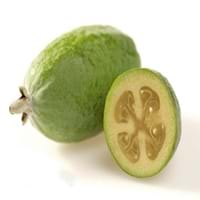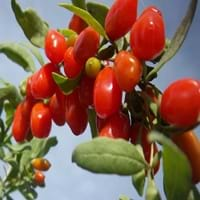Health Benefits
Anti depressant, Cancer prevention, Reduces nervous tension, Treatment of alzheimer's disease, Treatment of Lung disease
Anti-oxidant properties, Eye care, Helps in cartilage regeneration, Regulates Blood Sugar, Treatment of osteoarthritis
General Benefits
Digestive aid, Helps in weight loss, Improves blood circulation, Strengthens bones, Treatment of common cold
Boosts immune system, Digestive aid
Skin Benefits
Brightens and lightens complexion, Skin rejuvenation
Anti-aging benefits, Reduces wrinkles, Treatment of skin diseases
Hair Benefits
Promotes longer and healthier hair, Protects hair
Protects hair, Regulates hair growth
Allergy Symptoms
NA
Anaphylaxis, Itching, Sneezing, Wheezing
Side Effects
Allergic reaction
May interact with some drugs
Best Time to Eat
As a snack in the late afternoon, Don't consume at night and before bed, Eat the fresh ones, avoid mixing with any other foods, don't eat after meal., Morning time (before lunch)
Any time except an hour after meal, Don't consume at night and before bed
Vitamin A (Retinol)
Not Available
Vitamin B5 (Pantothenic Acid)
Vitamin C (Ascorbic Acid)
Vitamin K (Phyllochinone)
Phytosterol
Not Available
Calories in Fresh Fruit with Peel
Not Available
Calories in Fresh Fruit without Peel
Not Available
Calories in Frozen Form
Not Available
Calories in Canned Form
Not Available
Not Available
Season
Autumn, Winter
Autumn
Varieties
Anatoki, Gemini, Kaiteri, Kakariki, Pounamu, Unique, Apollo, Den's Choice, Kakapo, Mammoth, Opal Star, Triumph and Wiki Tu
No Types
Inside Color
White
Orange
Taste
Sweet
Slightly bitter, Tart
Origin
Argentina, Brazil, Paraguay, Uruguay
Unknown
Grows on
Not Available
Trees
Soil Type
Clay loam, Gravely loam, Sandy
Well-drained
Climatic Conditions
Cold, Warm
Cold, Hot
Facts about
- Feijoa is called as "pineapple guava" in some countries.
- Feijoa tree is an ornamental plant that can also be used as hedge & windbreak.
- All parts of feijoa fruit are edible(skin is mostly discarded).
- Study says a man named Li Qing Yuen used to eat goji berries daily and lived for 252 years.
- They are also known as wolfberries in India & China.
- This fruit is used for spiritual purposes at many places.
Top Producer
New Zealand
China
Other Countries
Australia, Azerbaijan, India, Japan, United States of America
Canada, France, India, United States of America
Top Importer
China
United States of America
Top Exporter
New Zealand
China
Botanical Name
Acca sellowiana
Lycium barbarum
Synonym
Feijoa sellowiana or Orthostemon sellowianus
Wolfberry
Subkingdom
Tracheobionta
Tracheobionta
Division
Magnoliophyta
Unknown
Class
Magnoliopsida
Unknown
Subclass
Rosidae
Asteridae
Family
Myrtaceae
Solanaceae
Species
A. sellowiana
L. barbarum
Generic Group
Myrtle
Not Available
Difference Between Feijoa and Gojiberry
We might think that Feijoa and Gojiberry are similar with respect to nutritional value and health benefits. But the nutrient content of both fruits is different. Feijoa and Gojiberry Facts such as their taste, shape, color, and size are also distinct. The difference between Feijoa and Gojiberry is explained here.
The amount of calories in 100 gm of fresh Feijoa and Gojiberry with peel is Not Available and 32.00 kcal and the amount of calories without peel is 55.00 kcal and Not Available respectively. Thus, Feijoa and Gojiberry belong to Low Calorie Fruits and Low Calorie Fruits category.These fruits might or might not differ with respect to their scientific classification. The order of Feijoa and Gojiberry is Myrtales and Solanales respectively. Feijoa belongs to Myrtaceae family and Gojiberry belongs to Solanaceae family. Feijoa belongs to Acca genus of A. sellowiana species and Gojiberry belongs to Lycium genus of L. barbarum species. Beings plants, both fruits belong to Plantae Kingdom.









